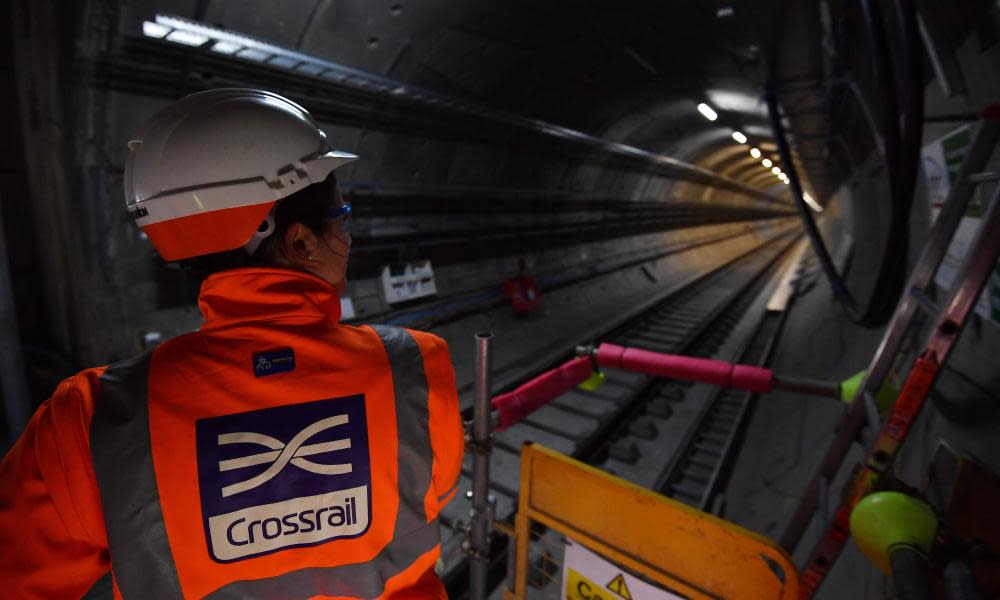Crossrail work to continue after £825m government loan

Work to complete Crossrail will continue after a last-minute £825m loan to London from the government kept the delayed rail line from a “disastrous” mothballing.
Transport for London said the new financing would allow work to carry on “at pace” to open the new railway in 2022 – but the political row simmered on between the mayor and ministers over whether the capital was being unfairly treated in the coronavirus pandemic.
Crossrail announced in August that it would require more funds after putting back its opening date a further year from 2021, partly due to distancing requirements for safe working.
The London mayor, Sadiq Khan, said that ministers had insisted London pay the shortfall on the £18.7bn project, a joint venture between TfL and the national government, “despite the overwhelming majority of the tax income that will result from Crossrail going to the Treasury”.
Khan said: “This is another example of London supporting the country way over and above the help we get from this government. I do not want this project to be stalled so it is vital that we dig deep to get the railway up and running.”
The government agreed £1.8bn of emergency Covid-19 financing for TfL last month to help tackle the huge loss in revenues since passengers were told to avoid travel, but excluded Crossrail funding at the time.
Grant Shapps, the transport secretary, said: “The government remains committed to the rapid completion of the project, in a way that is fair to UK taxpayers, and has committed to financing the completion of Crossrail. However, London – as the primary beneficiary – must ultimately bear any additional costs.”
He added that the government would “take all necessary steps to complete the project without requiring further additional funding”, while TfL was commissioning further independent analysis of costs.
Huge problems with the construction of stations along the new railway under central London were revealed only months before its original planned December 2018 opening, followed by difficulties in harmonising an overly complex signalling system.
Speaking to the London assembly transport committee after the announcement, Andy Byford, the TfL commissioner, said there would be “no further slippage” and that he and Crossrail had “a very clear understanding of the work still to do”.
Byford said that the funding deal “came down to the wire” and that no agreement “would have been disastrous: we would have had to mothball the project – it was grim reality, we would have had to stop work, we would have had no financial authority”.
With the money, he said: “We will be pragmatic, we may choose to park a few things - none safety critical, none public facing – to get the railway open. I’m crystal clear: no further slippage, no further recourse to public funding over and above what was previously identified by the outgoing Crossrail board.”
The outgoing board had identified a £1.1bn budget overrun and the deputy London mayor for transport, Heidi Alexander, admitted the government might still be asked to fund the remaining £275m. She said the delayed opening would also increase TfL’s losses by £200m, to a total of £1.3bn, in budgeted revenues from the Elizabeth line (as Crossrail will be known).
The current deal will see the Greater London Authority borrow up to £825m from the Department for Transport, to pass on as a grant to TfL. The GLA will repay the loan from business rate supplements and levies on developers.
Mark Wild, the chief executive of Crossrail, said delivery of the Elizabeth line was “in its complex final stages”, with more work to do on building the infrastructure before a year of intensive testing of the system could start in 2021. The Elizabeth line, capable of moving more than half a million passengers daily, would boost the UK economy by £42bn, according to TfL.

 Yahoo Movies
Yahoo Movies 
